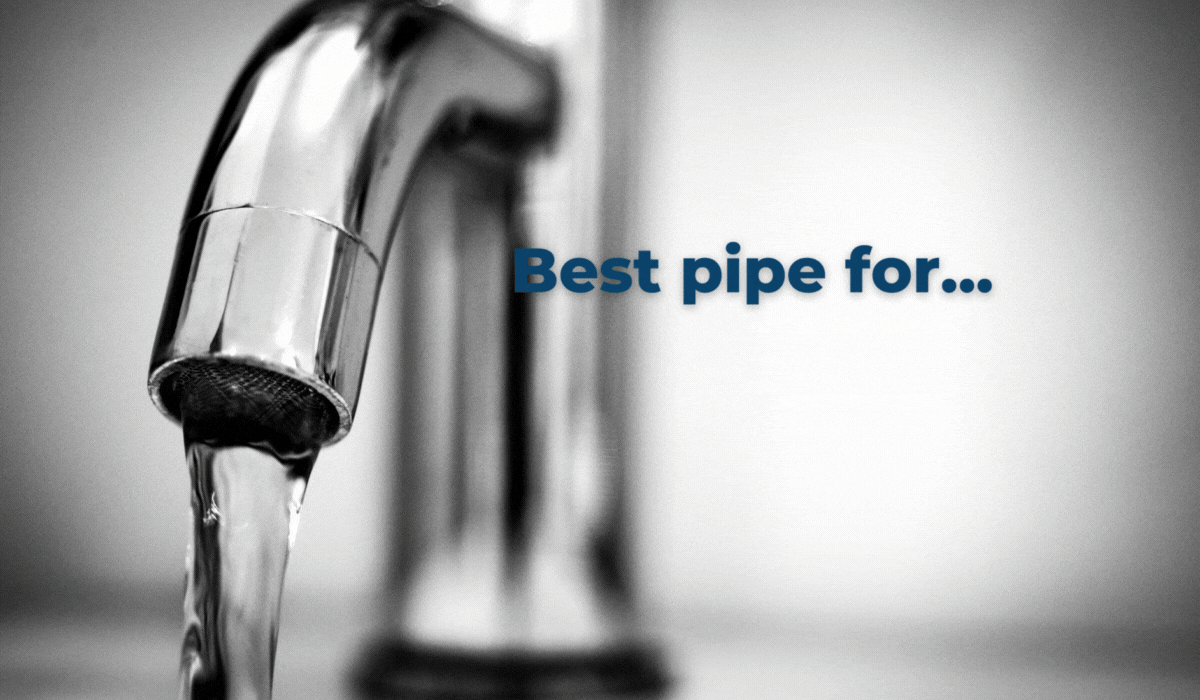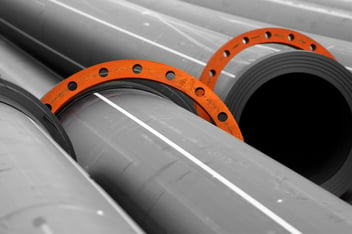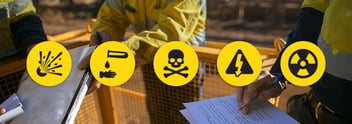What is the best pipe for potable water?
Are you installing a potable water system? To ensure your water supply is safe, pipes, fittings, and materials must meet strict safety regulations.
Potable water distribution is extremely demanding, requiring solutions that are suited to the environment and can properly transport the water under various conditions. This may include long distances, convoluted routes and differing peak and low demand.
At Waterworks, we are often asked about the best products for drinking water supply lines. To help guide your decision-making, this article outlines the key types of piping and fittings used and highlights a few defining qualities of each to keep in mind.
Guidelines for potable water systems
Several guidelines must be followed when installing potable water systems, including that pipes and fittings should be:
- Adaptable to temperature and pressure fluctuations
- Resistant to corrosion from water or treatment chemicals, like low levels of chlorine
- Suitable for use underground
- Designed for the local climate
- UV-resistant
It is often a requirement that piping should be approved by Watermark, the primary quality scheme for plumbing in Australia and New Zealand. However, there are some exceptions which don't always have a Watermark approval but are safe for use such as lead-free PVC.
For pipe fittings to qualify as “lead-free”, they should contain less than 4.5%wt (weight per cent) lead. Any more than that can be dangerous, especially for children and pregnant women.
Maintaining potable water systems
For distributing drinking water, the high cost of maintenance and repairs is a key concern. In most cases, the water mains and secondary lines are partially or fully underground. This means repairs and maintenance can come at a significant cost and disruption. For example, when repairing or maintaining a council watermain under a road way, this could require significant excavation as well closure or restriction of the roadway. Therefore, it is important pipes and fittings should be durable, reliable, and long-lasting to minimise the need for maintenance or replacements, especially when they are difficult to reach. High-quality pipelines mean fewer disruptions to the water supply and fewer resources spent on expensive repairs.
Most commonly, potable water main pipes and fittings are made of approved metal or plastic materials.
Metal pipes for potable water
Before plastics were introduced in the late 20th century, metal was the dominant material for water distribution piping in both commercial and residential applications. Some metals are still used today while others, which have been used, are now no longer regarded as suitable for potable water applications. We’ve listed some of these materials below.
Galvanised steel
Galvanised steel was a commonly used piping material for water supply lines for decades and can still be found in some older buildings. However, there are two key factors which pose a health risk meaning galvanised steel is no longer regarded as being suitable for potable water supply:
1. Galvanised pipes will eventually corrode which poses a risk of contaminating a water supply.
2. The zinc coating used to prevent corrosion in galvanised pipes contains lead and cadmium which both can pose a health risk in human consumption.
Copper
For much of the 20th century, copper was the gold standard for water supply lines, especially when galvanised steel became less popular. Copper is long-lasting and can be used for both hot and cold water applications.
However, copper piping involves an intensive manufacturing process and is increasingly expensive. Additionally, a separate system must be installed to monitor the acidity of the water – if the pH value is any lower than 7, it will cause corrosion.
- Safe for up to 50 years
- Compatible with compression fittings, push-fit fittings, or sweat soldering
- Expensive
- Labour-intensive installation
- Prone to pinhole leaks and thinning out
One point to consider in copper systems, particularly in hot water applications, copper can be susceptible to copper leaching. This tends to occur in systems with high velocity or turbulence in the pipe work. If left unmanaged, copper leaching can pose a health risk as consuming too much copper can be harmful.
Stainless Steel
Although stainless steel has been used in the treatment, storage, and distribution for over thirty years, it is still considered a relatively new material for this application compared to other metallic piping systems. Its benefits in creating safer water networks are becoming increasingly recognised around the world. Two of these benefits are:
1. Stainless steel is a harder metal compared to other metals such as copper. This makes it less susceptible to erosion from high velocities or turbulence in the pipework which in turn means it it less likely to leach contaminants into the water supply making it safer for human consumption.
2. Stainless steel has a smoother bore than other metals making it difficult for bacterial growth to form on the inside of the pipework and therefore again making it safer for human consumption.
Although there are different grades of stainless steel, 316 is generally recognised as the acceptable grade for potable water applications.
Plastic pipes for potable water
In the 1970s, the high cost of copper and its time-consuming installation led to the rise of plastic piping solutions. These plastic alternatives are lightweight, affordable, reliable, and much easier to install.
Polypropylene pipe (PP)
Polypropylene (PP) is a tough, rigid, and crystalline thermoplastic produced from propylene. It is often used in water distribution systems because it is less expensive than copper and can be joined with heat instead of chemical solvents.
Unfortunately, polypropylene has poor bonding properties and is affected by UV degradation, meaning it isn’t suitable for applications at high altitudes or areas of high UV penetration. It is also not a practical option for uneven terrain that is at risk of movement as it is too rigid to manoeuvre.
- Rigid
- Lightweight
- Cost-effective
- Easy to install
- Durable
- Not suitable for UV exposure
Polyvinyl Chloride pipe (PVC)
Polyvinyl chloride (PVC) is one of the most common thermoplastic polymers in the world. Over the past few decades, it has proven itself as a reliable piping solution for plumbing and drainage applications. For water distribution PVC pipes are manufactured to the AS/NZS 1477 standard. Some refer to this as PVC pressure pipe or Series 1 PVC pipe.
At Waterworks, our PVC pipe is lead-free, making it safe for distributing drinking water. They are effective, reliable, and simple to install using primer and PVC glue.
- Lightweight
- Cost-effective
- Easy to install
- Durable
Polyethylene pipe (PE)
Polyethylene (PE) is a thermoplastic material created by the polymerization of ethylene. It can be made in various sizes and ordered in straight lengths or coils which simplifies installation.
Polyethylene is used for a range of applications including irrigation lines, high-pressure water mains, dairy sheds, gas, compressed air, and drainage projects. It is favoured for water distribution, particularly below ground installations, because it is flexible, durable, and does not leach any toxins into the water.
- Flexible for use on uneven terrain
- Lightweight
- Cost-effective
- Easy to install
- Durable
Pipe fittings for potable water systems
The fittings and joints in a water system are crucial. They must be able to withstand pressure and temperature fluctuations, last for a long time, and not release any toxins.
Europress
At Waterworks, we use the innovative press-fit designs, Europress, for all kinds of piping systems, including potable water distribution. Europress connects stainless steel tube using a battery-powered clamping tool to create a secure, reliable join. The key benefits of Europress are as follows:
- Cost-effective and efficient
- Eliminates the need for hot works permits
- Project savings of up to 30%
- Reduces downtime
- Europress 316 has Watermark approval
It is worth noting that while most stainless steel isn’t a viable option for some applications all Europress 316 stainless steel is Watermark approved and is suitable for potable water applications.
Elysee compression fittings
Designed for medium-density compression applications, the Elysee range of fittings is a reliable option. The fittings are manufactured from certified raw materials that are well-suited to the harsh New Zealand environment.
- Watermark approved
- A lifespan of 50 years
- Withstands sub-zero temperatures
- Easy installation
- Integrated seal with extended cap thread
- High UV resistance
Elysee fittings are ISO 9001:2008 accredited and approved by several certification agencies, including Australian Watermark, AS/NZS 4129, and AS/NZS 4020.
Other fittings
While there are many components in a potable water system, other components from the Waterworks range which have Watermark approval include:
- DWV fittings
- Brass nickel plated ball valves
- Brass gate valves
- Tapping bands
For more advice on setting up a potable water system and the best solution for your specific application, contact the team at Waterworks. With our industry expertise and years of experience, we can advise which pipes and fittings are best suited to your needs and source the highest quality products.
Or browse the range of potable water solutions for yourself by clicking here.





